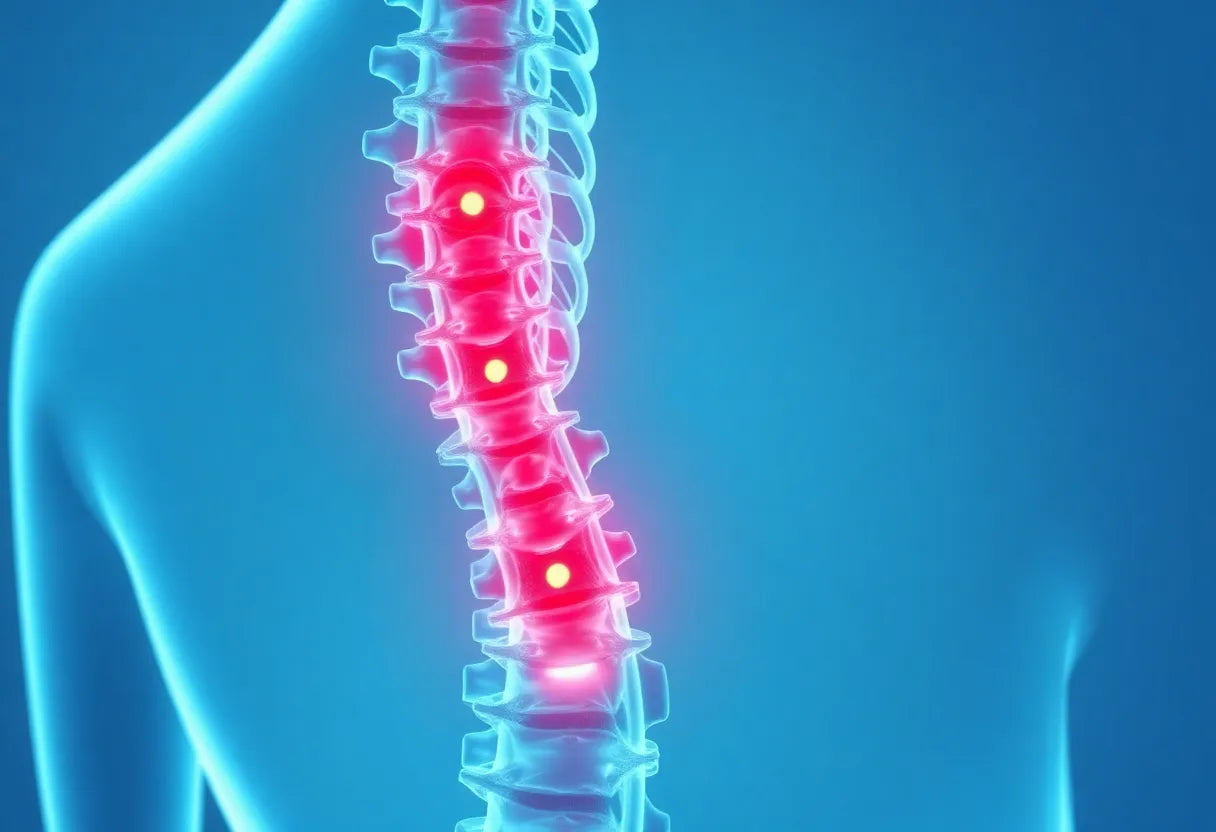Experiencing a pinched nerve in the hip can be a debilitating condition, often caused by excessive pressure on a nerve from surrounding tissues. This pressure can arise from conditions such as sciatica or piriformis syndrome, leading to symptoms like sharp pain, tingling, numbness, or weakness in the hip and leg area. Understanding the nature and causes of a pinched nerve is the first step in addressing this common issue.
Understanding pinched nerve in the hip
A pinched nerve in the hip can significantly impact daily activities, making it essential to identify and address the underlying causes. This condition occurs when nerves are compressed by surrounding tissues, such as muscles, bones, or cartilage. Common causes include sciatica, where the sciatic nerve is compressed, and piriformis syndrome, where the piriformis muscle irritates the sciatic nerve. These conditions can lead to discomfort, reduced mobility, and a decrease in quality of life.
Recognizing the symptoms is crucial for early intervention. Individuals may experience sharp or shooting pain, tingling sensations, numbness, or muscle weakness in the affected area. These symptoms can vary in intensity and may worsen with prolonged sitting or standing. It's important to note that while these symptoms can be distressing, targeted exercises can play a pivotal role in alleviating them.
The role of exercises in managing hip nerve pain
Exercises are a first-line approach to managing a pinched nerve in the hip, providing both immediate relief and long-term benefits. The primary goal of these exercises is to reduce nerve compression and improve flexibility and strength in the hip area. By targeting the piriformis muscle and other supporting structures, exercises can help alleviate pain, enhance mobility, and prevent future occurrences.

Lumbar support belt
Offers adjustable lumbar support to combat lower back pain and ease tension from conditions like sciatica.
Engaging in a regular exercise routine offers numerous benefits. It can decrease pain and improve overall hip function, allowing individuals to return to their daily activities with greater ease. Additionally, exercises promote better posture and alignment, which are essential for maintaining hip health. By incorporating specific stretches and strengthening routines, individuals can address the root causes of their discomfort and work towards a pain-free lifestyle.
In summary, understanding the causes and symptoms of a pinched nerve in the hip is crucial for effective management. Exercises play a vital role in alleviating pain, improving mobility, and preventing future issues. By committing to a regular exercise routine, individuals can take proactive steps towards finding relief and enhancing their overall well-being.
Recommended exercises for pinched nerve in the hip
When dealing with a pinched nerve in the hip, incorporating specific exercises into your daily routine can be incredibly beneficial. These exercises are designed to alleviate pressure on the affected nerve, enhance flexibility, and strengthen the muscles surrounding the hip joint. Here are some highly recommended exercises that target the piriformis muscle and other hip-supporting structures.
Piriformis stretch (supine)
The supine piriformis stretch is a gentle exercise that helps release tension in the piriformis muscle, which can often contribute to nerve compression.
- Lie on your back with both knees bent.
- Cross the ankle of the affected side over the opposite knee.
- Gently pull the uncrossed thigh toward your chest until you feel a stretch in the buttock of the crossed leg.
- Hold this position for 10–30 seconds, and repeat 2–3 times per leg.
Seated piriformis stretch
This exercise is ideal for those who spend long hours sitting, as it can be performed almost anywhere, including at a desk or on a chair.
- Sit with your feet flat on the floor, then cross one ankle over the opposite knee.
- Keep your back straight and lean forward gently until you feel a stretch in your glute.
- Hold for 20–30 seconds, then repeat on the other side.
Glute bridge
The glute bridge is a strengthening exercise that targets the gluteal muscles and helps stabilize the hip joint, reducing strain on the nerves.
- Lie on your back with knees bent and feet flat on the floor.
- Press through your heels to lift your hips, tightening your buttocks as you rise.
- Hold the bridge position for a few seconds before lowering back down.
- Repeat 10–12 times for optimal results.
Foam roller glute/piriformis massage
Using a foam roller can help release tension in the gluteal muscles, providing relief from nerve compression.
- Sit on a foam roller positioned under your buttocks, with your knees bent.
- Rock gently side to side to massage the gluteal muscles and piriformis.
- Focus on any tight areas, spending extra time where needed.
Bird-dog exercise
This core-strengthening exercise helps improve stability in the lower back and hips, which is crucial for reducing nerve irritation.
- Start on your hands and knees, ensuring your back is flat.
- Extend one arm forward and the opposite leg backward, keeping them in line with your body.
- Hold for a few seconds, then switch sides.
- Perform 10 repetitions on each side.
Additional strategies for relief
In addition to these exercises, there are several other strategies that can complement your routine and provide further relief from a pinched nerve in the hip.
Heat and cold therapy
Applying heat or cold packs can help reduce inflammation and soothe pain. Use a cold pack for the first few days to decrease swelling, then switch to heat therapy to relax tight muscles.
Low-impact aerobic activity
Engaging in low-impact activities like walking, cycling, or swimming can enhance blood flow and promote healing without aggravating symptoms. Aim for at least 30 minutes of activity most days of the week.
Postural adjustments
Improving your posture can significantly reduce nerve compression. Consider using ergonomic furniture, such as standing desks, and take regular breaks to move around if you sit for extended periods.

Men's Posture Shirt™ - White
Shirt with patented NeuroBand™ technology to improve posture, reduce pain, and activate muscles.
By incorporating these exercises and strategies into your routine, you can effectively manage a pinched nerve in the hip, reduce discomfort, and improve your overall quality of life. Consistency is key, so aim to practice these exercises regularly and adjust based on your comfort level and progress.
lifestyle and ergonomic tips
Managing a pinched nerve in the hip goes beyond exercises. Incorporating lifestyle changes and ergonomic adjustments can significantly aid in reducing symptoms and preventing recurrence. Here are some practical tips to consider:
avoid high-impact activities
It's essential to refrain from exercises that place excessive stress on the hip, such as running or jumping. These activities can exacerbate symptoms and lead to further nerve irritation. Instead, focus on low-impact exercises that promote healing and strength without undue strain.
frequent movement
Prolonged sitting or standing can increase pressure on the hip nerves. Taking regular breaks to stretch and move around can help alleviate tension and improve circulation. Consider setting a timer to remind yourself to stand up and walk every hour, especially if you have a sedentary job.
ergonomic workspace
Optimizing your work environment can prevent nerve compression. Use ergonomic chairs that support your lower back and maintain a neutral spine position. Adjust your desk height so that your elbows are at a 90-degree angle when typing. If possible, incorporate a standing desk to alternate between sitting and standing throughout the day.
frequently asked questions
what causes a pinched nerve in the hip?
Common causes include herniated discs, bone spurs, or tight muscles like the piriformis compressing the nerve. These conditions can lead to increased pressure on the nerve, causing pain and discomfort.
when should I see a healthcare provider?
If symptoms persist despite self-care efforts, worsen over time, or if you experience significant weakness or loss of bowel/bladder control, it is crucial to consult a healthcare provider for a comprehensive evaluation and treatment plan.
can these exercises fully cure a pinched nerve?
While exercises can significantly alleviate symptoms, they may not fully cure the underlying cause. It's important to consult a healthcare provider for a comprehensive treatment plan that may include additional therapies or interventions.
how often should I do these exercises?
Aim for daily practice to maximize benefits, but listen to your body and adjust frequency based on your comfort and progress. Consistency is key, but it's important not to overdo it, especially if you experience increased pain.
are there any exercises to avoid?
Avoid high-impact or strenuous activities that exacerbate pain. Focus on low-impact and controlled movements that promote healing and strength without causing additional strain on the hip.
Incorporating these exercises and lifestyle adjustments can significantly aid in managing a pinched nerve in the hip. By understanding your body’s needs and making informed choices, you can work towards reducing discomfort and improving your quality of life.
Kilder
- Hinge Health. "Pinched Nerve in Hip: Causes, Symptoms, and Treatment."
- Harvard Health Publishing. "Got a Pinched Nerve? Strategies and Treatments for Pain Relief."
- Healthline. "Pinched Nerve in Hip: Causes, Symptoms, and Treatment Options."
- YouTube. "Exercises for a Pinched Nerve in the Hip."
- MyHealth.Alberta.ca. "Pinched Nerve: Aftercare Instructions."
- Mayo Clinic. "Pinched Nerve: Diagnosis and Treatment."
- NHS. "Exercises for Sciatica."
- Hospital for Special Surgery. "Hip Flexor Stretch."


















